Vehicle Fires: The Horizontal Hood Cut
Ever roll up to a vehicle fire and see crews fumbling around with trying to open the hood by cutting the inverted “V” at the hood latch?
Try this tip at the next engine compartment fire you’re working.
Before breaking out the saw try the hood release in the interior of the car if it’s accessible. Then try to open the hood the conventional way. When opening the hood be sure to have a charged hose line ready should the fire flare up. It’s better to try before you pry.
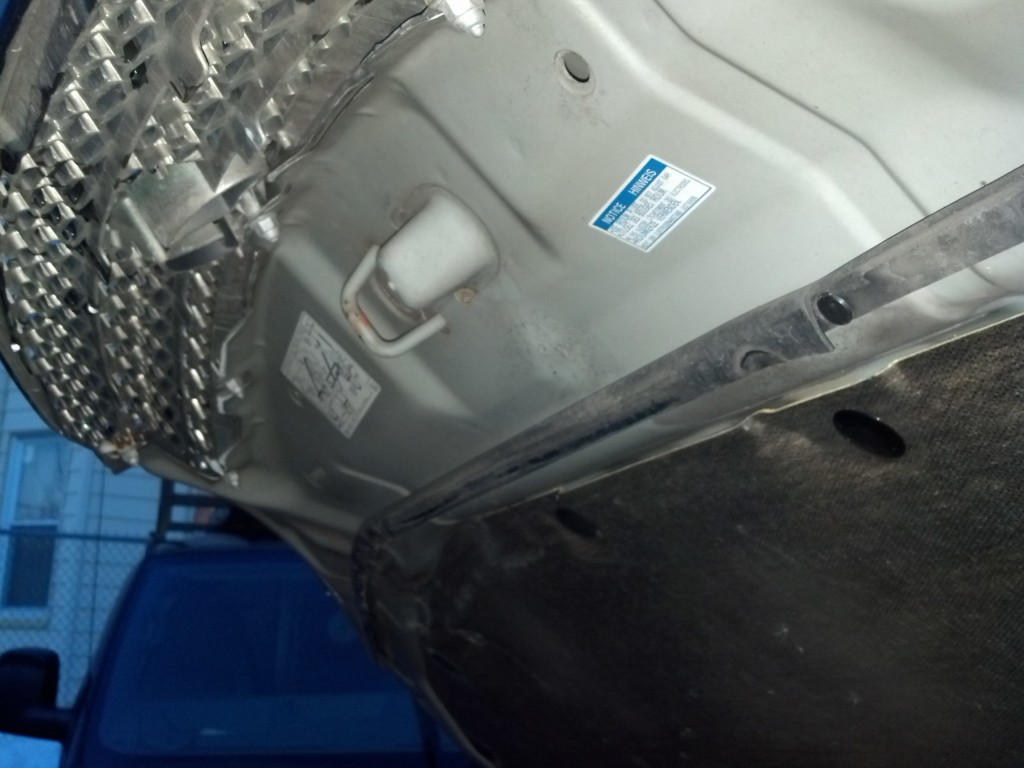
This shows the underside of the hood where the latch assembly is located. Remember to try before you pry. Try and pop the hood from the inside first unless the mechanism is destroyed.
If hood does not release, instead of cutting the old style inverted “V” move a third to halfway up the hood. Use the metal cutting rotary saw (K-12 / Partner / Stihl or whatever brand your department uses) & sink the blade in the middle of the hood perpendicular to the front quarter panel and cut back to yourself, cutting through the quarter panel to ensure that you have fully cut through the edge of the hood.
Then go to the opposite side of the vehicle and continue your cut back to the quarter panel. This cut will allow the hood to be opened in the middle by using pike poles or a halligan to separate the front and back of the hood to access the engine compartment for extinguishment. All of this should be done while wearing all proper PPE & SCBA and under the protection of a hose line.
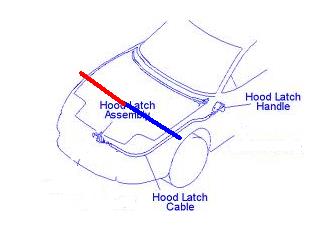
The BLUE line shows the 1st cut and the RED line shows the 2nd cut. Make sure to overlap the cuts.
5 Reasons to perform the Horizontal Hood Cut
- Keeps the firefighter out from the front of the vehicle. Bumpers have been known to release and potentially can cause injuries.
- The metal is thinner in the middle of the hood than at the front.
- Some vehicles have multiple hood connection points. So, by cutting the main hood latch the hood may not release and more cutting is necessary.
- Some vehicles hood lifts from the rear forward. By cutting in the center you take out the guess work.
- It’s faster than cutting the inverted “V”.

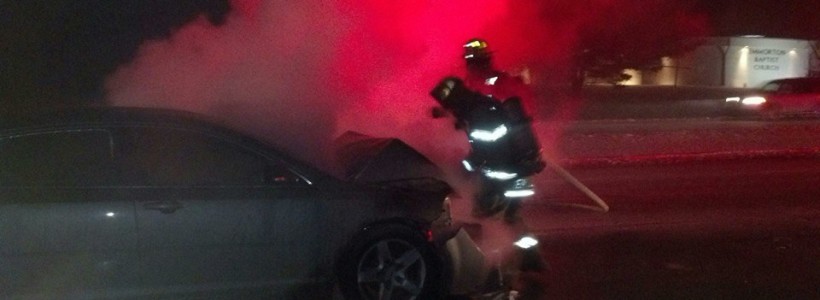
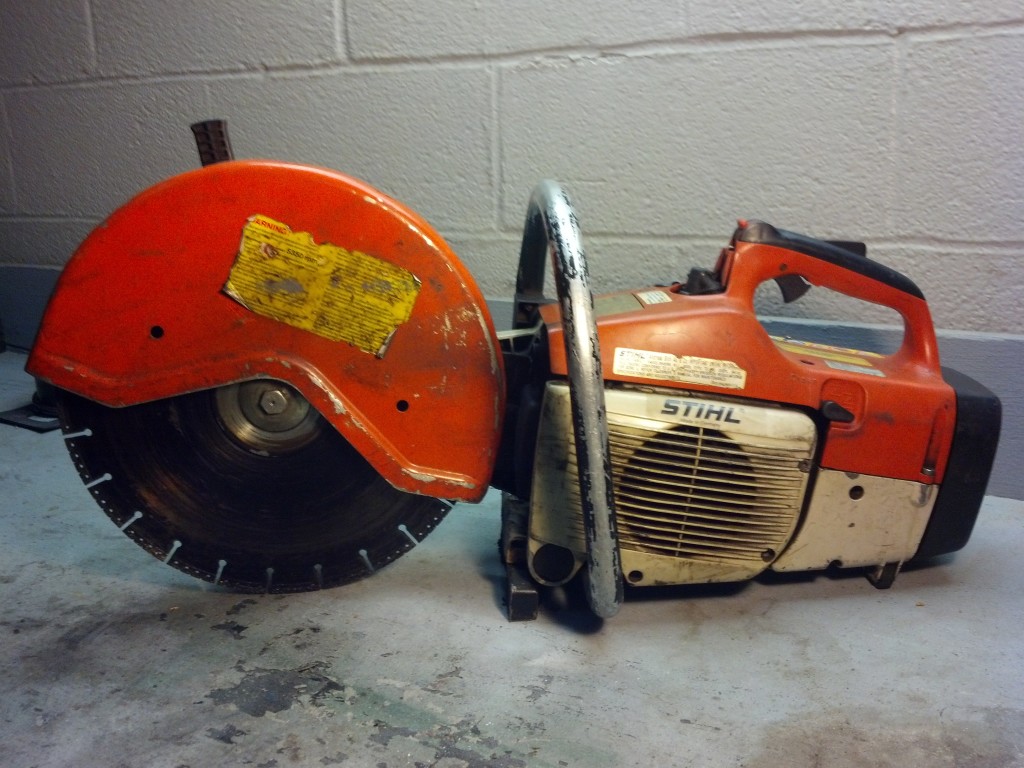
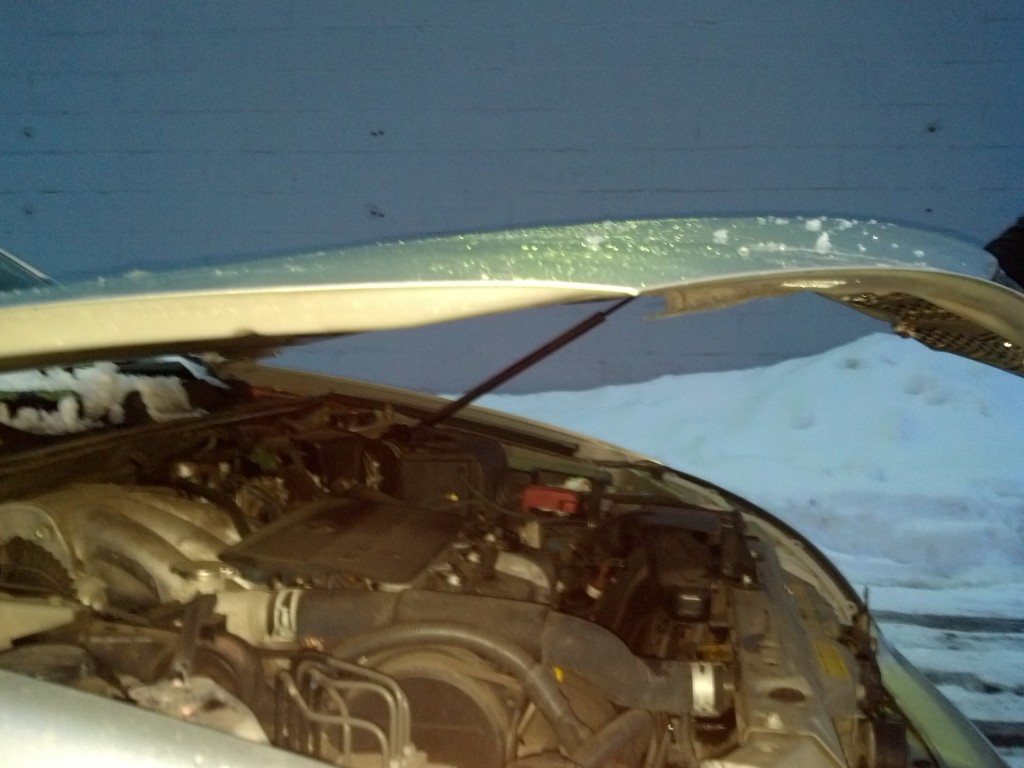
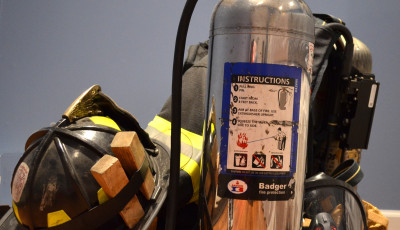
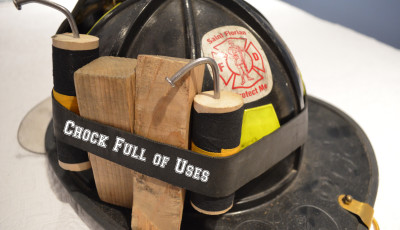
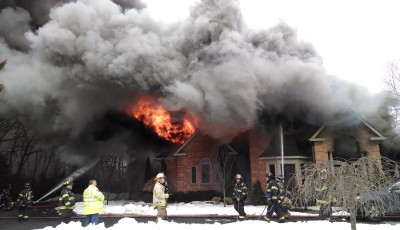
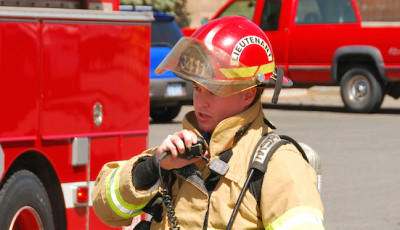
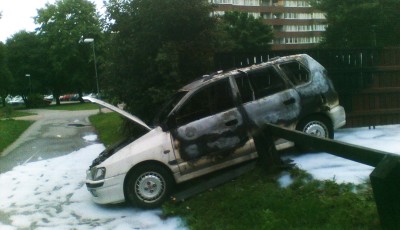
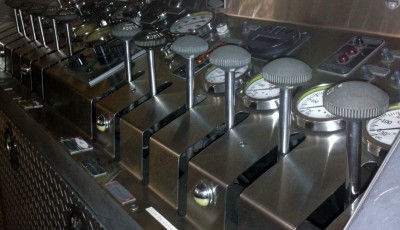




Thx for the articles. I really appreciate them!
More driver operator scenarios and forcible entry would be cool!
Using the circ saw during vehicle fires is dangerous. The benefits do not out weigh the risks – while potentially standing in fuel, one should not use a saw and create a bunch of sparks that could ignite the fuel.
Fighting Vehicle Fires in general can be dangerous, not only a potential of a fuel leak, but you have no idea what people have in their cars.
If I needed access to the engine compartment of a vehicle fire, I would take my Halligan Tool make a purchase point and pry back a corner of the hood for access.
This I would consider this during an overhaul stage if this was a last option.
Will be training with this method soon. Great article.
This is exactly the way we open the hoods in Boston. I’ve always found it to work great.
What happens if the hood is raised by gas struts? Won’t you be cutting through them?
I want to thank everyone that has read and commented on this article. As we are all aware there are several ways to accomplish the same task in the fire service. Different times will call for different measures. This is just another tool to put into your mental toolbox.
To answer some questions and comments:
The Circular saw is a dangerous tool. Like anything else in the fire service practice, practice, and more practice will help to make us better operators.
Having a hose line to knock down the fire down and having a back up like to protect the members operating is great. Using Class B foam and putting down a quick foam blanket can prevent any flammable vapors from leaking fuel or liquids from igniting.
As for the question about the gas struts, usually the gas struts are mounted in the rear and are connected to the hood less than half back way from the rear of the hood. They won’t be cut if we cut between 1/3 to 1/2 way back on the hood from the front. Always use caution while opening the hood, looking out for springs and gas struts.
Thanks again, Keep Drilling & STAY SAFE
John Hayowyk
Great article LT, got to agree with you on the big picture, everything we do is inherently dangerous and like you mentioned this is just another tool for the toolbox, thanks again for the great insight keep it coming.
We have used this technique for a few years and it works great. We have never had an issue with sparks and fuel. Great article!
LT Hayowyk – can you add an image credit for the photo of the car fire at the top of the article? Credit should be to Tim Pierce, with a link to the original image at https://www.flickr.com/photos/qwrrty/3863303704/. Thanks!